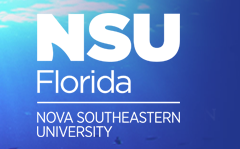Date
12-2024
ESRP 9000 Professor
David B. Ross, Ed.D.
ESRP 9001 Professor
Lucas DeWitt, Ed.D.
Executive Summary
Leveraging a Supportive Work Environment to Increase Employee Retention. Michelle Ulysses-Grant, 2025: Strategic Research Project, Nova Southeastern University, Abraham S. Fischler College of Education and School of Criminal Justice. Keywords: employee rewards, employee retention, COVID-19, SWOT analysis, full-time student equivalent, quantitative strategic plan matrix, ESSER
The purpose of this strategic plan research project was to delve into the organizational structure and workplace environment in a large urban school district. A thorough analysis was conducted using strategic planning tools such as a strengths-weaknesses-opportunities-threats analysis, this approach aimed to identify both the internal and external factors that were influencing operational efficiencies and personnel dynamics by the identification of 40 factors. This analysis brought to light a complex and critical problem which was the employees reporting the lack of a supportive work environment which in turn was negatively impacting employee retention rates at both the instructional and administrative staffing levels.
To address the issue, the quantitative strategic planning matrix was utilized to identify the most appropriate solution. The integration of a tiered rewards and recognition program was the strategy that emerged as the most optimal to enhance employee morale and organizational connectedness. The proposed 3R: Rewards, Recognition, Retention program consists of a six-step action plan designed to infuse various stakeholders, including educators, administrators, and district leadership. The program also boasts the feature of peer-to-peer recognitions through social media and a technology platform providing a structured and continuous recognition system while leveraging technology to quantify and evaluate program effectiveness over time.
The final recommendation advocates for the implementation of the tiered rewards and recognition program coupled with financial incentives to optimize employee engagement and retention. By leveraging these strategies, a school district can create a more supportive and motivating work environment, ultimately enhancing its ability to recruit and retain high-quality personnel to achieve the organizational objections in alignment with the strategic plan.
Document Type
Strategic Research Project-NSU Access Only
Degree Name
Doctor of Education (EdD)
College
Abraham S. Fischler College of Education
Concentration
Organizational Leadership
Language
English
Recommended Citation
Michelle J. Ulysses. 2024. Leveraging a Supportive Work Environment to Increase Employee Retention. Capstone. Nova Southeastern University. Retrieved from NSUWorks, Abraham S. Fischler College of Education. (237)
https://nsuworks.nova.edu/fse_srp/237.

